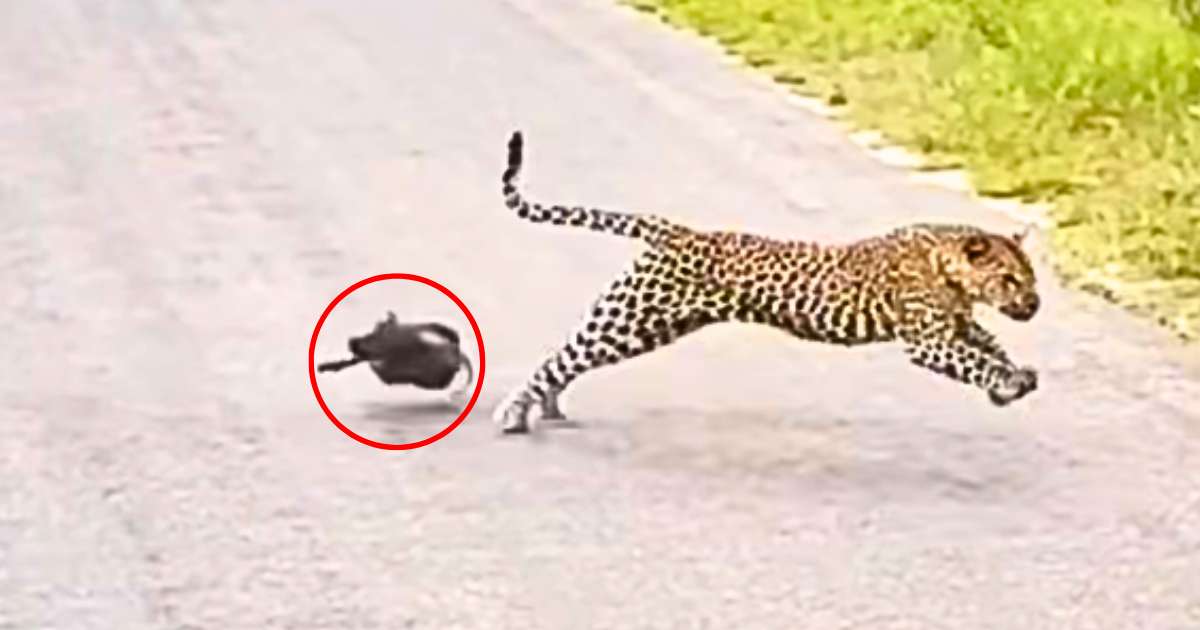Animals in the wild never fail to amaze us with their strength, instincts, and surprising behaviors. Among Africa’s big cats, leopards are known for being stealthy hunters — masters of ambush, patience, and power. But one leopard in South Africa’s Kruger National Park showed not just skill but greed, when it decided that one baby warthog wasn’t enough. This rare sighting captured the dramatic chase, the intense moment of the kill, and the relentless nature of life in the wild.
An Ordinary Safari Turns Extraordinary
It was a sunny day in Kruger National Park when field guide Thuli Mnisi, 42, and her guest Cassie Yeager set out for what they hoped would be a memorable wildlife drive. Mnisi’s American guests had one wish — to see a leopard in the wild. They had heard that one had been spotted earlier on the H11 road, and their excitement was building. Unfortunately, their first search turned up nothing. Refusing to give up, Thuli decided to take a different route along the S1 toward S65, hoping their luck might change.
Little did they know, they were about to witness one of the most dramatic animal stories of their lives.
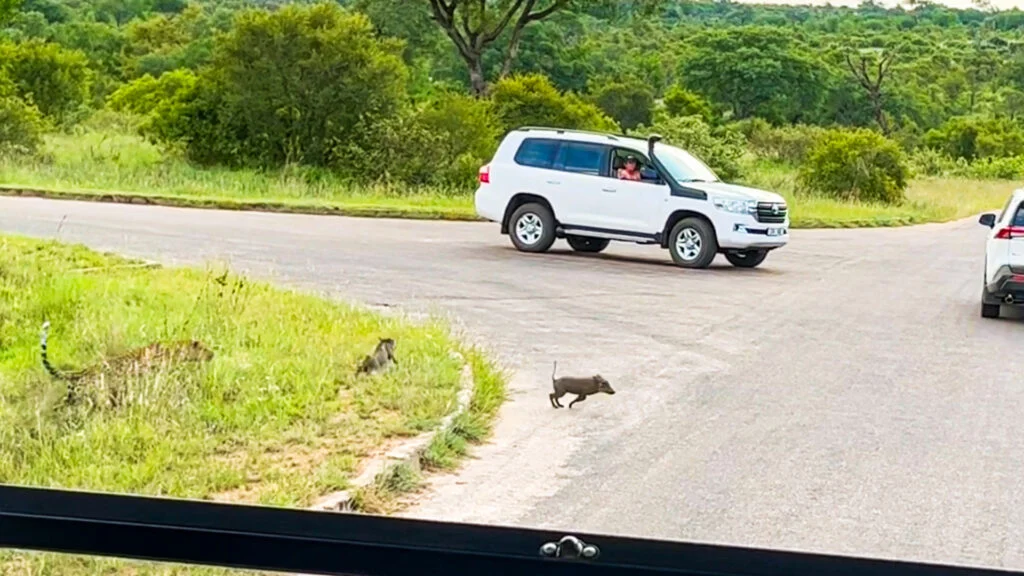
The Calm Before the Hunt
As they drove deeper into the reserve, the group came across a family of warthogs playing on the road. The mood was light — cameras clicked, laughter echoed, and the scene looked peaceful. But the calm was short-lived. Suddenly, one of the guests shouted, “Leopard!” and everything changed.
The warthogs froze. The leopard had been hiding nearby, watching and waiting for the perfect moment to strike. Known for their exceptional stealth and patience, leopards are ambush predators. They rely on surprise rather than speed, and this one had positioned itself perfectly.
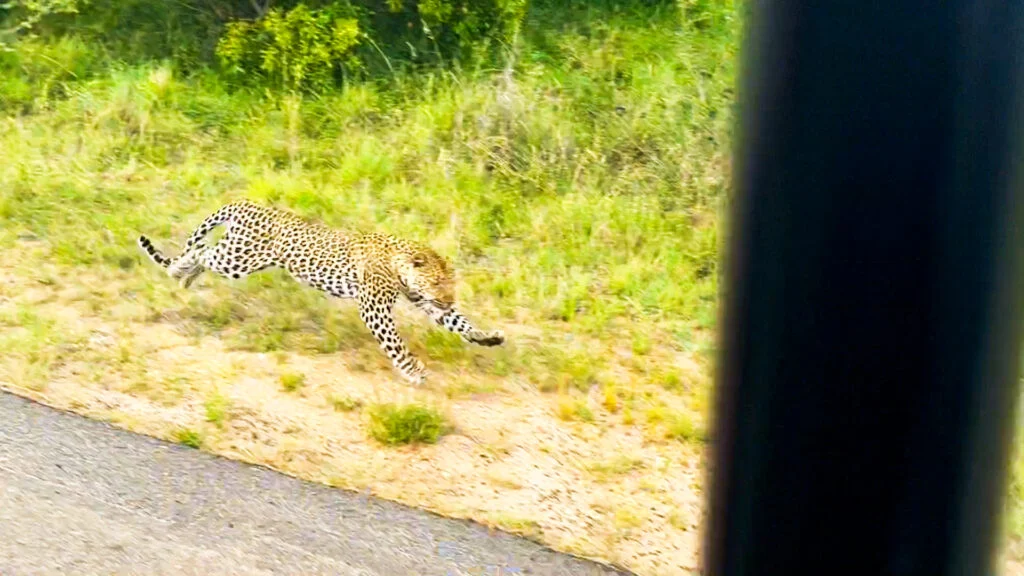
A Killer’s Approach: Silent and Deadly
Leopards are among the most versatile hunters in the animal kingdom. They are solitary, nocturnal predators that use their powerful senses of sight and hearing to track prey. They can climb trees with ease and often drag their kills into the branches to keep them safe from scavengers. But their most impressive hunting trait is their ability to stay invisible until the last second.
In a blink-and-you-miss-it moment, the leopard exploded from the bush. Before anyone could react, it lunged forward and snatched one of the piglets from the ground. With a powerful bite to the head — a signature killing technique — the young warthog was dead almost instantly.
But the leopard’s hunger wasn’t satisfied.
👉 Read more inspiring wildlife stories: Full Story: Man Loses 360 Pounds Naturally — Internet Rallies to Support His Next Step
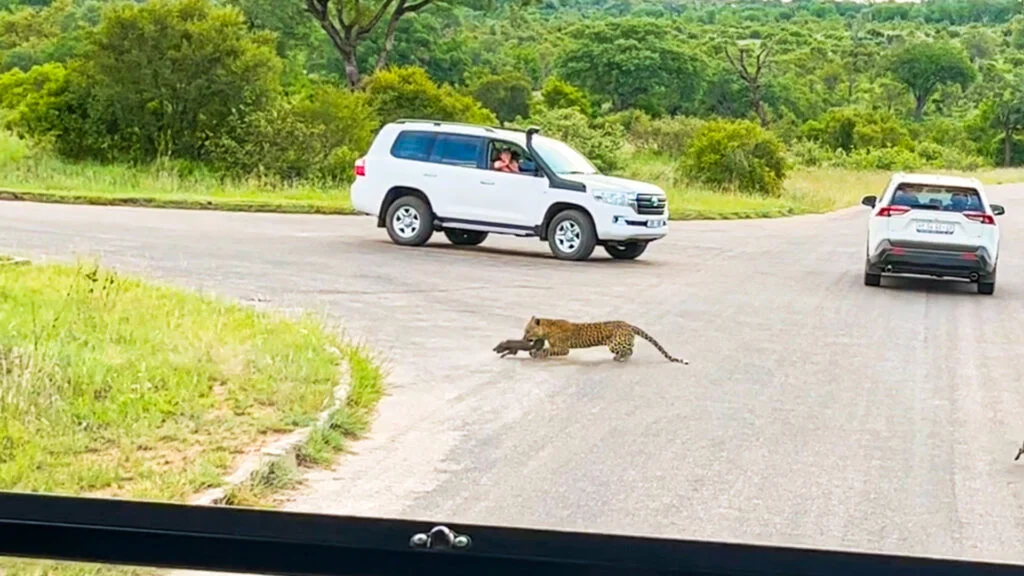
Greed Takes Over: The Chase for a Second Piglet
Instead of settling with its successful hunt, the leopard did something unusual. It dropped the lifeless piglet on the ground and turned its attention to another baby warthog. Driven by instinct — and perhaps greed — the big cat darted after the second piglet, determined to double its reward.
The second piglet, however, was faster and more alert. Squealing in terror, it dashed away, weaving through the brush and putting distance between itself and the predator. Despite the leopard’s speed and agility, the chase ended in failure. The second warthog escaped into the safety of the bush, leaving the leopard to return to its original kill.
This brief but intense pursuit demonstrated one of nature’s most important lessons: even apex predators don’t win every battle.
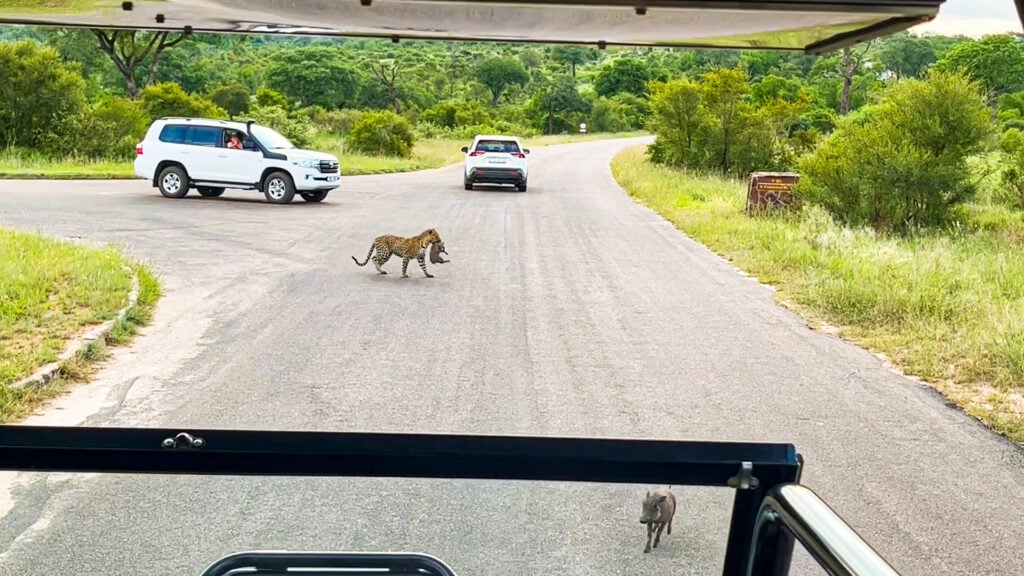
The Feast and the Fascination
Frustrated but not defeated, the leopard returned to its first kill. It dragged the small piglet beneath a marula tree at the junction of S65, where it could eat in peace. Leopards are known for their strength — capable of hauling prey heavier than themselves up into trees to protect it from scavengers like hyenas and lions. This behavior not only ensures a meal but also reflects the solitary and strategic lifestyle that makes them such successful hunters.
For Mnisi’s guests, this was a once-in-a-lifetime experience. Witnessing a leopard hunt — especially such a dramatic and rare sequence — is something even veteran guides rarely see. For first-time visitors to Africa, it was an unforgettable highlight.
Why Leopard Sightings Are So Special
Leopards are among the most elusive animals in Africa. Their solitary nature and excellent camouflage make them difficult to spot in the wild. They often hunt at night, and during the day they spend hours resting in trees or hidden in tall grass. Because of this, most safari visitors consider a leopard sighting the most exciting and rewarding moment of a trip.
What made this particular sighting even more remarkable was the behavior of the predator. It wasn’t just a routine hunt — it was a rare display of opportunistic behavior, showcasing the leopard’s relentless drive to maximize every hunting opportunity.
Lessons From the Wild: Nature’s Raw Reality
This hunt also reflects the harsh realities of life in the African bush. Predators like leopards live on the edge of survival, and every meal matters. A failed hunt could mean days without food. That’s why they take risks and chase opportunities, even if it means going after a second piglet when one would have been enough.
At the same time, prey animals like warthogs must stay constantly alert. Their survival depends on speed, awareness, and instinct. In this case, one piglet wasn’t fast enough — but the other’s quick reaction saved its life.
These dynamics — predator and prey, success and failure, life and death — are what make the natural world so captivating. Each interaction is part of a larger story, one that has been unfolding for millions of years.
👉 You might also like: The Hidden Meaning Behind Princess Diana’s Cannes Gown – A Heartfelt Farewell to Grace Kelly
Final Thoughts: Respect for Nature’s Drama
The story of the “greedy” leopard is more than just a thrilling tale of predator and prey — it’s a powerful reminder of how animals survive and adapt. Even the most skilled hunters are driven by instinct to seize every opportunity. And even the smallest prey can escape with courage, speed, and a bit of luck.
For the guests on that safari, it was a lesson in patience and perspective. Sometimes, the most extraordinary wildlife encounters happen when we least expect them. And sometimes, the difference between life and death in the wild comes down to a single heartbeat.
In the end, the leopard may have caught only one piglet, but the experience was a victory for everyone who witnessed it. It was a living, breathing story of survival — one that highlights the beauty, brutality, and balance of nature.
